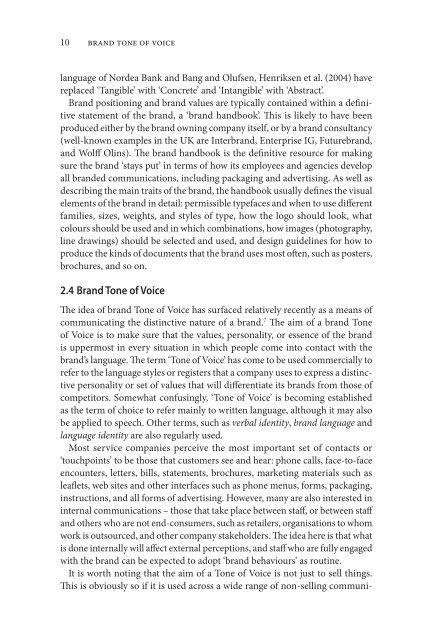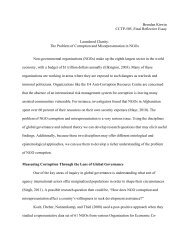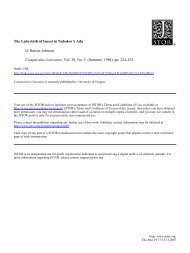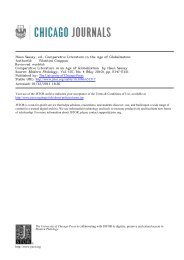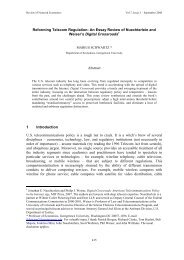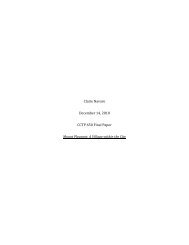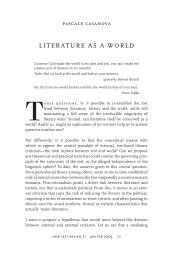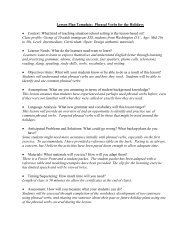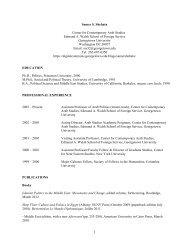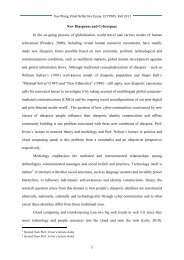Brand Tone of Voice:
Brand Tone of Voice:
Brand Tone of Voice:
- No tags were found...
You also want an ePaper? Increase the reach of your titles
YUMPU automatically turns print PDFs into web optimized ePapers that Google loves.
10 brand tone <strong>of</strong> voicelanguage <strong>of</strong> Nordea Bank and Bang and Olufsen, Henriksen et al. (2004) havereplaced ‘Tangible’ with ‘Concrete’ and ‘Intangible’ with ‘Abstract’.<strong>Brand</strong> positioning and brand values are typically contained within a definitivestatement <strong>of</strong> the brand, a ‘brand handbook’. This is likely to have beenproduced either by the brand owning company itself, or by a brand consultancy(well-known examples in the UK are Interbrand, Enterprise IG, Futurebrand,and Wolff Olins). The brand handbook is the definitive resource for makingsure the brand ‘stays put’ in terms <strong>of</strong> how its employees and agencies developall branded communications, including packaging and advertising. As well asdescribing the main traits <strong>of</strong> the brand, the handbook usually defines the visualelements <strong>of</strong> the brand in detail: permissible typefaces and when to use differentfamilies, sizes, weights, and styles <strong>of</strong> type, how the logo should look, whatcolours should be used and in which combinations, how images (photography,line drawings) should be selected and used, and design guidelines for how toproduce the kinds <strong>of</strong> documents that the brand uses most <strong>of</strong>ten, such as posters,brochures, and so on.2.4 <strong>Brand</strong> <strong>Tone</strong> <strong>of</strong> <strong>Voice</strong>The idea <strong>of</strong> brand <strong>Tone</strong> <strong>of</strong> <strong>Voice</strong> has surfaced relatively recently as a means <strong>of</strong>communicating the distinctive nature <strong>of</strong> a brand. 7 The aim <strong>of</strong> a brand <strong>Tone</strong><strong>of</strong> <strong>Voice</strong> is to make sure that the values, personality, or essence <strong>of</strong> the brandis uppermost in every situation in which people come into contact with thebrand’s language. The term ‘<strong>Tone</strong> <strong>of</strong> <strong>Voice</strong>’ has come to be used commercially torefer to the language styles or registers that a company uses to express a distinctivepersonality or set <strong>of</strong> values that will differentiate its brands from those <strong>of</strong>competitors. Somewhat confusingly, ‘<strong>Tone</strong> <strong>of</strong> <strong>Voice</strong>’ is becoming establishedas the term <strong>of</strong> choice to refer mainly to written language, although it may alsobe applied to speech. Other terms, such as verbal identity, brand language andlanguage identity are also regularly used.Most service companies perceive the most important set <strong>of</strong> contacts or‘touchpoints’ to be those that customers see and hear: phone calls, face-to-faceencounters, letters, bills, statements, brochures, marketing materials such asleaflets, web sites and other interfaces such as phone menus, forms, packaging,instructions, and all forms <strong>of</strong> advertising. However, many are also interested ininternal communications – those that take place between staff, or between staffand others who are not end-consumers, such as retailers, organisations to whomwork is outsourced, and other company stakeholders. The idea here is that whatis done internally will affect external perceptions, and staff who are fully engagedwith the brand can be expected to adopt ‘brand behaviours’ as routine.It is worth noting that the aim <strong>of</strong> a <strong>Tone</strong> <strong>of</strong> <strong>Voice</strong> is not just to sell things.This is obviously so if it is used across a wide range <strong>of</strong> non-selling communi


